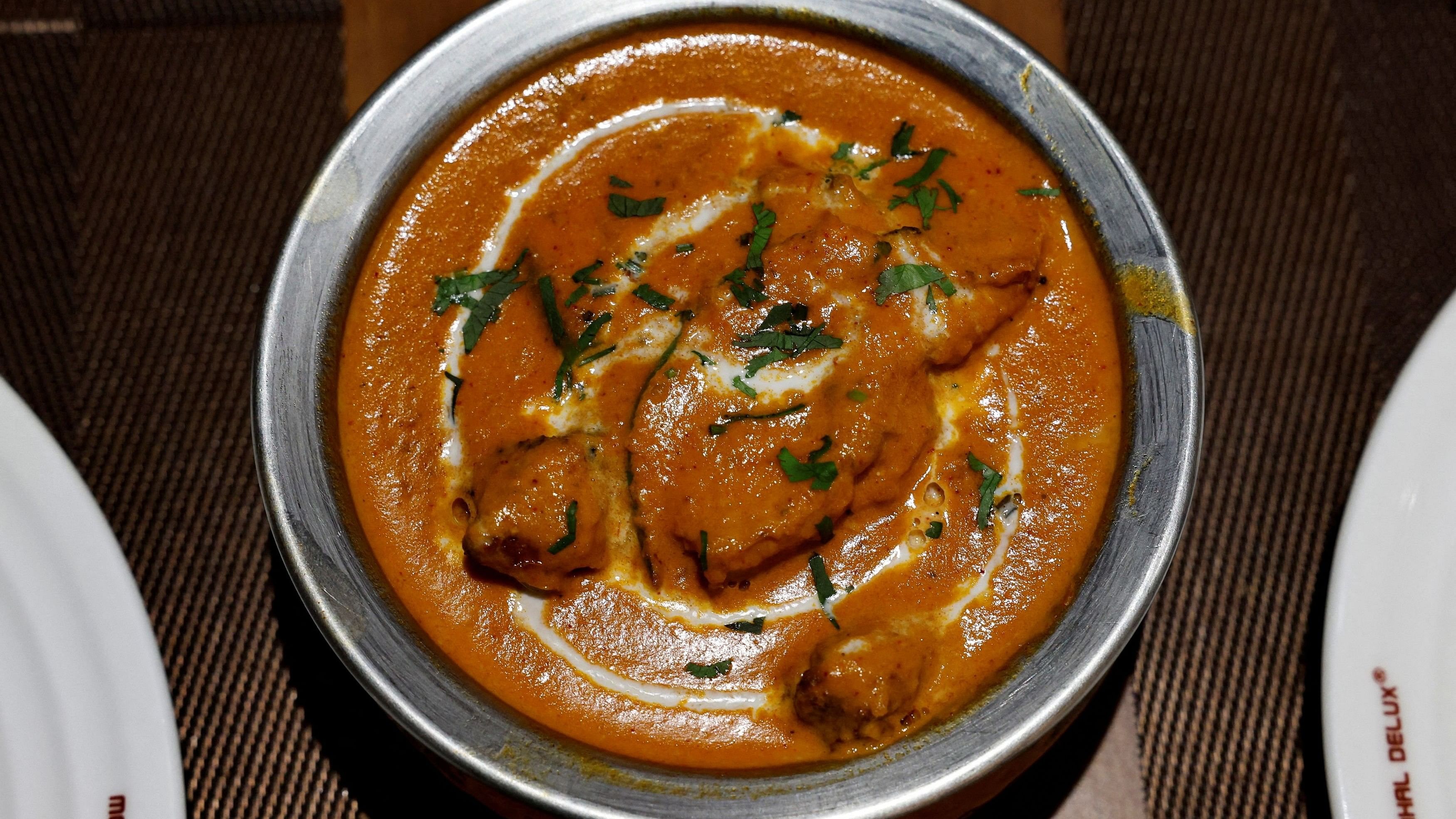
A freshly prepared butter chicken dish placed on a table.
Credit: Reuters Photo
By Raj Tawney
For as far back as I can remember, chicken makhani - or butter chicken as it’s more commonly known — has been a premiere dish for Indian cuisine in the United States. Oftentimes, it’s the only item that non-Desis can mention by name, and their love for the rich curry runs deep.
It’s likely a significant reason why several analyses of Google searches have shown Indian food to be among the Top 5 most sought-after cuisines across the US.
Food companies have capitalised on this admiration by making jarred versions of the curry (often labeled as “sauce”) that can be purchased from most major retail grocery chains. And in 2023, the frozen dinner version claimed the #1 Lunch & Dinner spot in Trader Joe’s Customer Choice Awards, dethroning Mandarin orange chicken.
But long before we could walk down grocery aisles, pick up pre-cooked butter chicken and pop it in a microwave to enjoy (a term I use loosely here), it had to be created.
A fight for the credit of the dish’s origin story has reached India’s courts, as the descendants of two men stake claim.
In one corner is the family of Pakistani chef Kundan Lal Gujral, who is said to have taken leftover tandoori chicken and mixed it in a gravy he formed with other unused ingredients.
Following the partition in 1947, Gujral moved over to Delhi, India, where he set up the restaurant Moti Mahal, which became internationally famous for this very dish. On the other side are the family members of Kundan Lal Jaggi, a chef at Moti Mahal. They claim he is the true inventor of butter chicken.
Whoever wins in India, within the US - where giving credit where credit is due is hard to come by and playing fast and loose with authentic cuisine is acceptable — it won’t matter much. What’s top of mind here is the dish’s popularity and how it has helped bridge cultural gaps.
Prominent figures, such as First Lady Jacqueline Kennedy, dined at Gujral’s establishment while visiting the subcontinent and were served butter chicken in the 1960s, which helped popularize it back home.
Then, in 1973, when actress-turned-cookbook author and TV chef Madhur Jaffrey first published An Invitation to Indian Cooking, general intrigue grew.
Attempting to recreate the dish at home was a necessity for many fans. Dining-out options were limited because then, as is the case now, the number of Indian restaurants was low.
A recent ResearchandMarkets.com report found that despite Indian Americans being the second-largest Asian American community, their share in the restaurant business “is still relatively modest.”
The dish first appeared at a stateside eatery, Gaylord Indian Restaurant, in Manhattan in 1975. At the few other Indian restaurants around the country, butter chicken showed up on more menus as curious and fearful diners alike stepped up to taste the unknown glop that seemed less intimidating than other dishes being offered, like palak paneer (pureed spinach curry with soft cheese curd) and dahl (light, soup-like lentil curry) — both of which are delicious.
Whether it was enjoyed by non-Indian Americans in or out of the home, butter chicken served as an olive branch to outsiders interested in breaking into Indian cuisine.
In ways, as food sometimes does, it was also an entry point into understanding Indian culture and people, who often faced bigotry because of their skin color, name, clothes, accent and religion.
This is not to say that the presence of butter chicken was a magical antidote to the violence and prejudice that Indians faced, but it played a part in the community being accepted as part of the “model minority”. We now know how harmful the label can be, but at the time, it felt like a much-needed reprieve.
Butter chicken, with its bright bronze hue, creamy tomato-based texture, tender chicken chunks, and less spicy ingredients, felt more accessible to Americans. After all, it’s chicken in a cream sauce.
As a kid growing up less than an hour outside of New York City in the 90s, I always assumed the recipe was developed in the US as a way to appease American tastebuds.
I was sure of it because the dish was never found in households of families who cooked. At catered events that fed multi-cultural guests. Sure. My nickname for it was “wedding food”, and it wasn’t meant to be flattering.
Curries at home tended to have less cream and more spice, and there was little to no priority given to meat as most Indians prioritize vegetarian dishes. Also, I witnessed too many non-Indians gushing over the flavor, and for me, that was a sign that it couldn’t have possibly been created in India.
“Oh my God, I love Indian food! I always order the butter chicken and basmati rice, and they give me a basket of garlic naan!” is the kind of thing I’d frequently hear throughout my childhood and still continue to - no matter where I travel in the country.
I usually smile back, offering my support for their effort to be cultured, but the dish is so ingrained in American cuisine that it feels like they’re raving about the equivalent of a hamburger and French fries.
Perhaps that’s the ultimate symbol of bridging gaps, though - forgetting where one thing ends, and another begins. And in many ways, the credit for that honor is being debated in India’s courts too.
While I may internally cringe like a curmudgeon each time someone raves about it, I also realise if one meal is capable of opening a person’s mind just a little bit, then its presence on stocked shelves and on menus is well-earned.